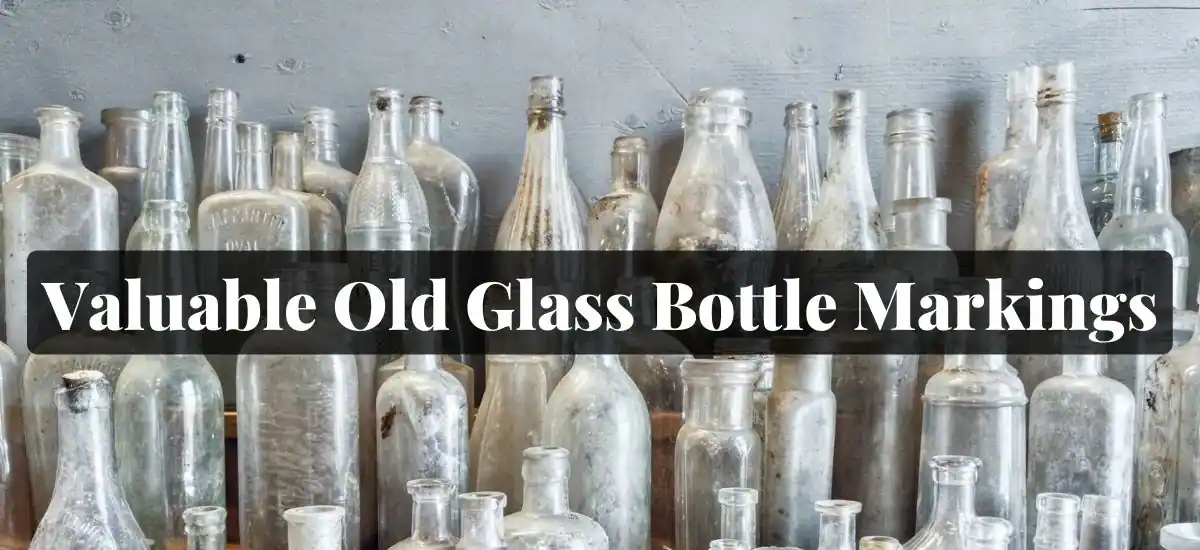Collecting various kinds of glass bottles is one of the most popular hobbies all over the globe – and too for a good reason. With each bottle adding up to your collection, a treasure trove of history comes along. From different markings and labeling to government warnings, different techniques, and much more.
If you are interested in collecting antique glass bottles, you might often face confusion while trying to understand and decipher the markings on them. The marking made on the glass bottles is more important than you think.
The highly valuable old glass bottle markings are the components that can help you in differentiating a fake from a find. In addition, these valuable old glass bottle markings allow you to determine the age as well as the value of the bottles you have collected.
Once you get to know what to look for, we are sure that you can spot a good catch when you visit the flea market, an antique shop, or the internet next time. Hence, keep reading this article to learn all about valuable old glass bottle markings.
Antique Bottle Markings: How To Identify Them
The huge variety in glassware, including shape, color, size, and style, and the presence of multiple factors – rarity, condition, and age – are all great contributors to determining the true worth of an antique glass bottle. However, other than these, the markings placed on the bottom or side of the glass bottles can also contribute quite a bit in telling you about the history and value of the bottle.
You can identify a marking on an antique bottle by finding the marking, identifying the type of the marking, examining the photos and pricing guides given on the internet, and lastly, understanding the effect of the marking on the value of the glass bottle. For spotting the markings, you are required to examine the bottle very carefully.
The name of the product or the manufacturer could be printed on the side of the bottle, and it can help recognize your find. Other than that, turn over the bottle to check if there’s any mark on the bottom. Some may have the signature of the manufacturer as well. The mark isn’t obvious, just use your finger to feel it.
In case you are not able to read a mark properly, you can place a white paper on the bottle, then lightly rub over the mark using a crayon or charcoal.
Related Post: Know About 12 Precious Japanese Figurines
The types of markings
In general, marking means the act or process of making or giving a mark. In the case of businesses, a hallmark or trademark exclusively recognizes a product as belonging to a particular manufacturer or organization and indicates the company’s ownership of the brand.
The case of marking the glass bottles is quite similar in that sense. Every manufacturer of glass bottles puts their own marking on the bottles they manufacture to symbolize their ownership over the brand to which the bottle belongs.
Once you can spot the mark on your bottle, it’s time to classify it by type. Glass bottles that are generally made in the US tend to have markings that fall under a few categories:
Embossed marks
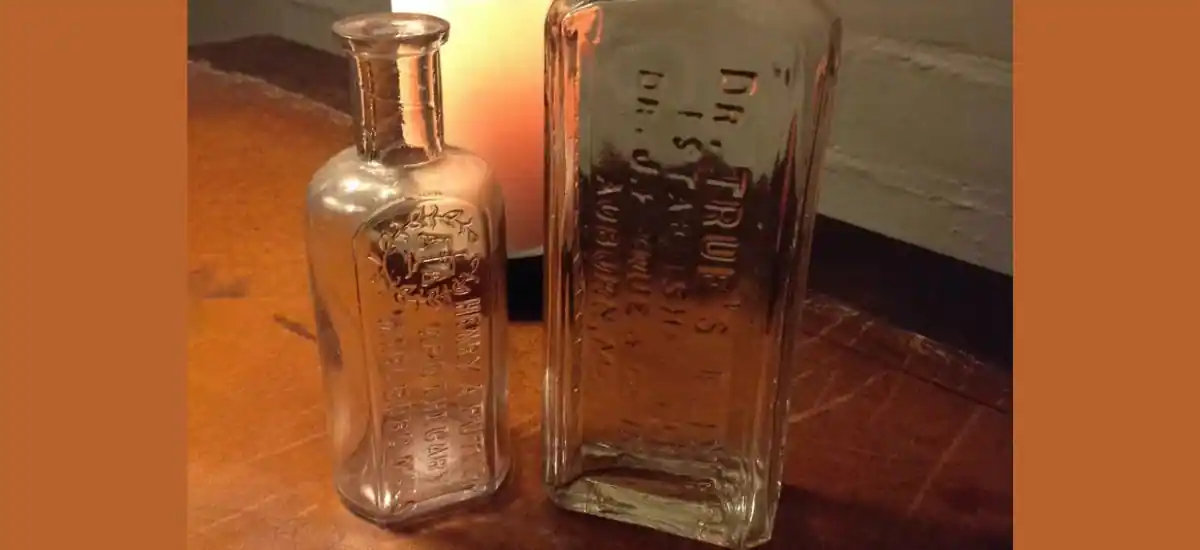
The embossed product names or labels are generally placed on the side of the glass bottles. These markings are mostly utilized on liquor and beer bottles. The embossed markings on a glass bottle can tell you what type of bottle it is. Moreover, these marks can also be helpful for you in case you acquire a glass bottle in your collection.
It would be a good idea to keep a guide to bottle bottom recognition when you go to look for some valuable pieces at an antique shop or flea market because the variety of mark types can help you in dating the bottles you are interested in.
Maker’s marks
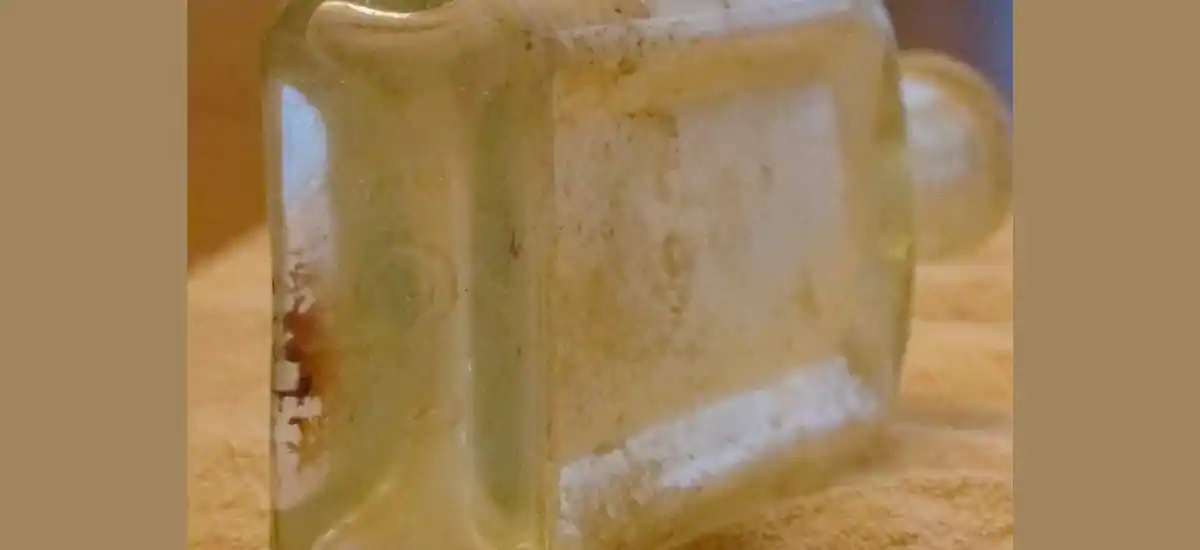
Different markings can be helpful for you to identify glass bottles; however, the very first step will be learning to recognize a glass maker’s mark. Maker’s marks are frequently placed on the bottom part or base of the glass bottles. These marks were usually presented in the form of letters, names, numbers, or symbols.
For instance, people are quite familiar with the NEG Co logo of the New England Glass Co. At the bottom of the bottles that this company produces include an embossed glass maker’s mark along with a symbol of copyright. It is quite easy to remember, just think NEG.
Read More: Professional Guide To Date Antique Ice Box
Pontilas marks
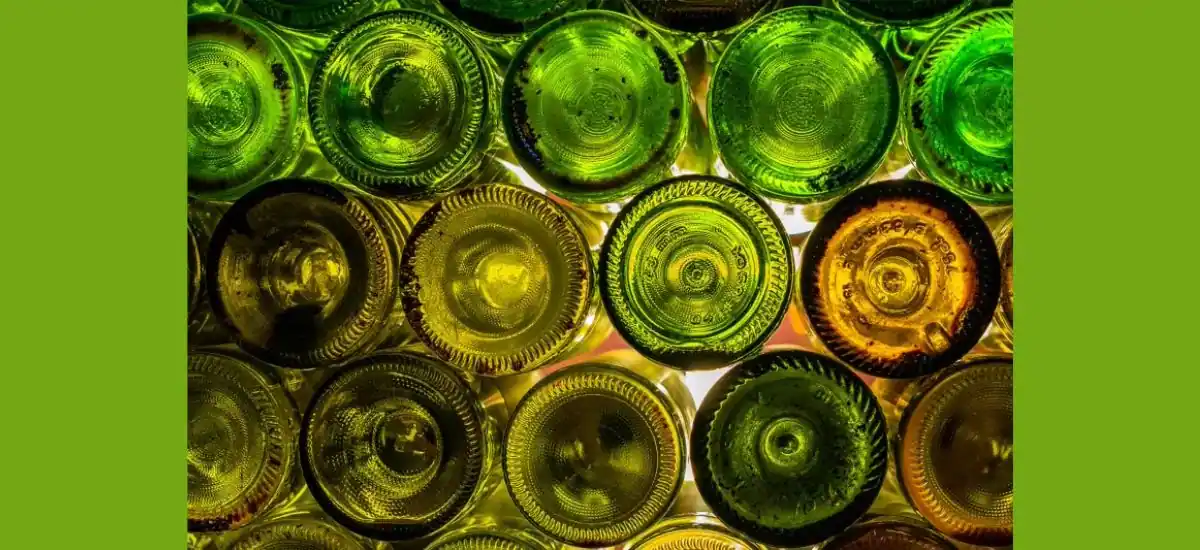
The word ‘pontil’ is taken from an Italian word for a pin utilized for creating a seal on a glass. Pontil marks are basically circular shapes that you can see at the bottom of a glass bottle that demonstrate that it is made of free-blown glass. The mark will look like an arrowhead.
The mark gets created when the pontil is broken off the bottle’s bottom. This process of creating a glass bottle is called ‘working while hot’ and it needs excellent skills by the glass blower, as they cannot hold or touch it even the slightest while performing the task.
Mold lines
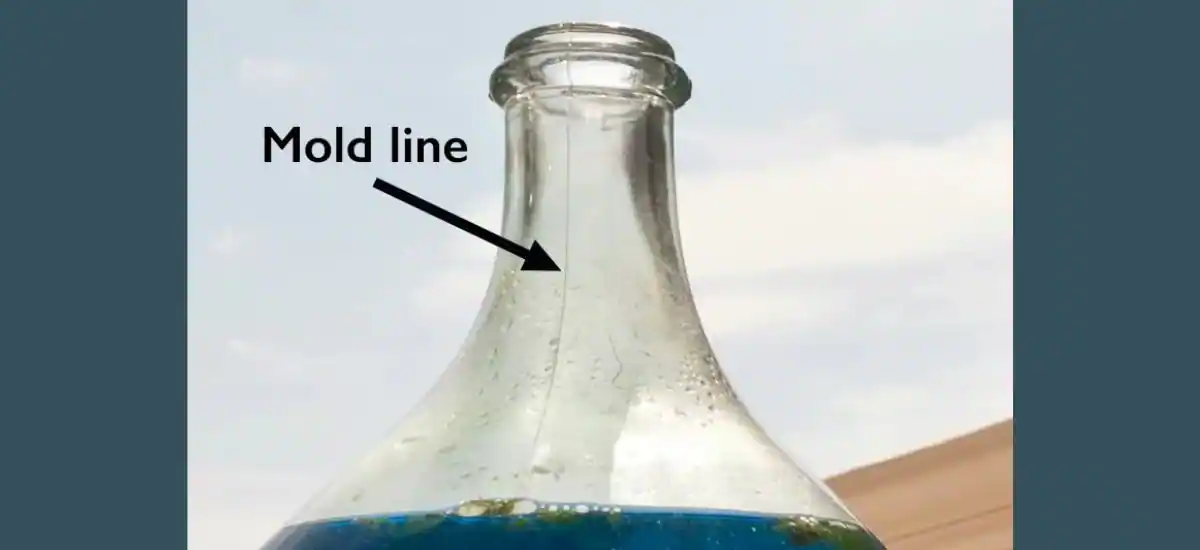
A mold line is basically a line or mark that was left on a glass bottle prior to being blown into a mold. These mold lines or machine marks can be noticed on various antique glass bottles which were produced in the late 19th and early 20th centuries.
These mostly look like thin lines or small circles on the base of a glass bottle. These lines basically run along the area where the two pieces of glass join. The mold line helps you to find out if the bottle was hand-blown or produced by a machine.
Due to the imperfectness of the molds, every bottle acquires its unique set of lines, and you might need magnifying glasses to inspect it properly.
What Effects Value Have on Marks
A marking on a glass bottle can have a direct influence on its value. There are several types of markings. Among all, some markings can exhibit how the bottle was manufactured, and also the age of the bottle, by extension.
If a glass bottle has pontils marks on it, then it will generally indicate a bottle that is quite older, and sometimes the older bottles turned out to be more valuable. On the online shopping platform, eBay, you can notice that certain pontil glass bottles are sold regularly for a few hundred dollars.
Scarcity is a notable factor in the value of an antique glass bottle, and the presence of certain markings is quite rare.
For example, in accordance with the Antique Bottle Trader, an amber glass bottle of blackberry brandy that has a star mark on it, produced by the Pacific Glass Works has been seen to get valued at near 2,200 USD, due to the fact that there were just 15 of those glass bottles were in existence.
Learn More: What Are The Value Of Antique Cast Iron Bell
Do old glass bottles really have antique value?
As a matter of fact, glass bottles have been around for a long time now. The glass bottles were believed to be first created by the Romans in 1AD. Because of the presence of rich history, people considered glass bottles to be equivalent to being collectible antiques.
In general, the older a glass bottle gets, the more costly and valuable it becomes, hence, knowing the correct age of a glass bottle is highly necessary.
Moreover, understanding the markings on the glass bottles can allow you to identify and determine whether a piece is worthy to be considered an antique or not. The more you will increase your knowledge about the markings of antique glass bottles, the better you will become at spotting a highly valuable antique bottle to add to your collection.
Frequently Asked Questions
1. How can you tell the age of a glass bottle?
Ans. The embossed maker’s mark or letters on the side or the bottom part of a glass bottle can allow you to find out the most about its age. For instance, before the mid 19th Century, pontil markings were the signature of glass bottles.
A pontil is basically an iron rod that was utilized for the purpose of holding the glass bottle in the time of the manufacturing process. As a consequence, a ring-shaped mark was made at the bottom of the bottles, which is called the pontil mark. If a glass bottle has a pontil mark, then it will indicate that it’s mouth-blown glass.
Prior to the mid-19th century to the early 20th century, the mouth-blown manufacturing process became very rare, as the majority of them adopted the automatic manufacturing process. And this is why if you see a pontil marking on a glass bottle, it will be a clear indication that it belongs to the early 19th century or even earlier.
2. What kind of glass bottles are worth the money?
Ans. The bottles made of colored glass are typically more pricey and valuable in comparison to the clear glass ones. As a matter of fact, a colored glass bottle can be easily sold for 1000 USD or more compared to the same bottle made of clear glass.
3. What is a pontil mark on a bottle?
Ans. A pontil mark or punt mark is basically a scar where the pontil or punt was broken from a work of blown glass. Before the mid 19th Century, pontil markings were the signature of glass bottles.
A pontil is basically an iron rod that was utilized for the purpose of holding the glass bottle in the time of the manufacturing process. As a consequence, a ring-shaped mark was made at the bottom of the bottles, called the pontil mark.
If you can notice a pontil mark on a glass bottle, then it is indicating that the bottle was flown freehand, and on the other hand, the absence of such a mark indicates that either the mark has been removed or the bottle was mold-blown.
4. What are empty wine bottles worth?
Ans. The empty wine bottles generally sell for around 50 cents each bottle; however, the financier bottles can bring in about USD 5.00 per bottle (e.g. the cobalt blue bottles). Moreover, auctions for wine corks sell in lots as small as 25 and as huge as 55. However, usually, the wine corks sell for nearly 10 cents each.
5. What can you do with glass bottles in Montreal?
Ans. In case you live in Montreal, you can voluntarily bring all the bottles you have stacked to two sites in Ahuntsic-Cartierville. Your bottles will be collected here, and then the bottles will be 100 percent recycled at the local processing plants.
